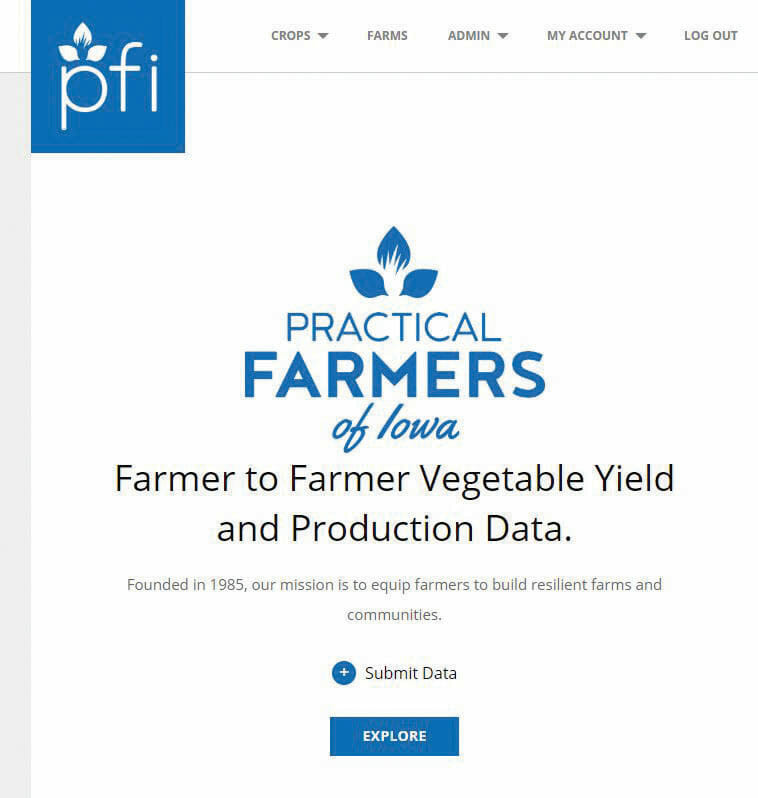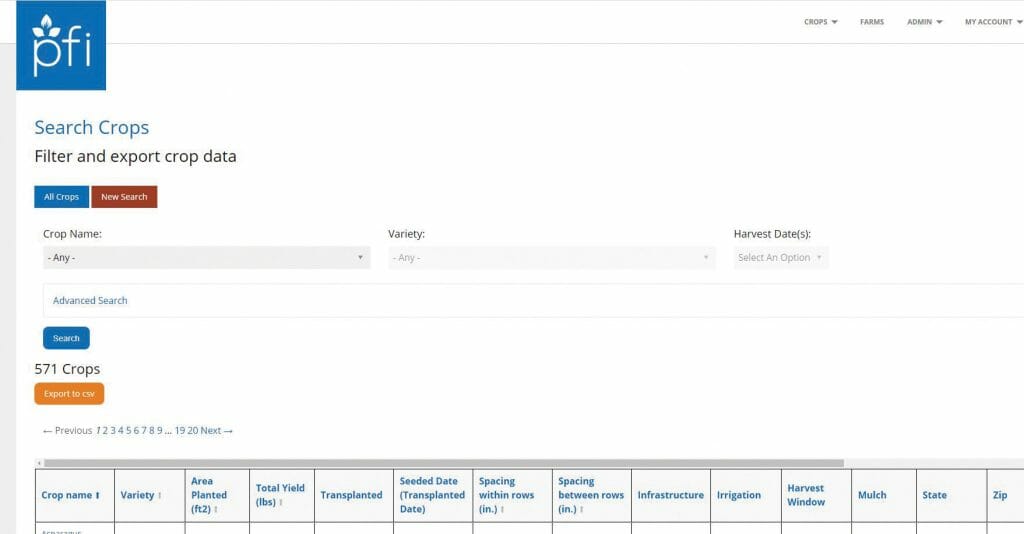Crowdsourcing Vegetable Yields
A special PFI portal helps vegetable farmers share their production data – and fortify their management
NOTE: This project to track vegetable yield and production data is currently on pause, but data can be accessed through the following reports:
Given the prevalence of yield discussions among corn and bean farmers and annual yield surveys in the ag media, some readers may be surprised to learn that many vegetable growers are not tracking their yields in a manner consistent with other growers, or tracking them at all!
Why aren’t they? Several factors make yield data collection more difficult, and less important to vegetable farmers. First, most vegetable farmers are selling directly to consumers. Direct sales retain a larger portion of the consumers’ food dollar, but also mean farmers are busy with multiple weekly markets, and with upwards of 20 types of crops from May to November (and into the winter months). Farms keep detailed sales records, but because they are often selling by the bunch or piece, does it truly matter how many pounds come out of the field?
Vegetable farmers in PFI wanted a way to more efficiently share production and yield information. To meet this request, PFI launched the Farmer to Farmer Vegetable Yield and Production Data website.
For such a complex set of cropping, harvest and sales records, having the wrong system for recording yields is more frustrating than not doing it. No two vegetable farms are set up alike. Most harvest and packing is done manually, and recordkeeping preferences vary widely – from paper notebooks or whiteboards to spreadsheets and smartphone apps.
And yet, for farmers to plan, grow and become more efficient and consistent in their field planning and marketing, they need to be able to compare their production values to benchmarks; ideally to benchmark values relevant to their farming systems. Having accurate farm-level data helps farmers scale appropriately for customer demand, and confidently approach opportunities for insurance and investment.
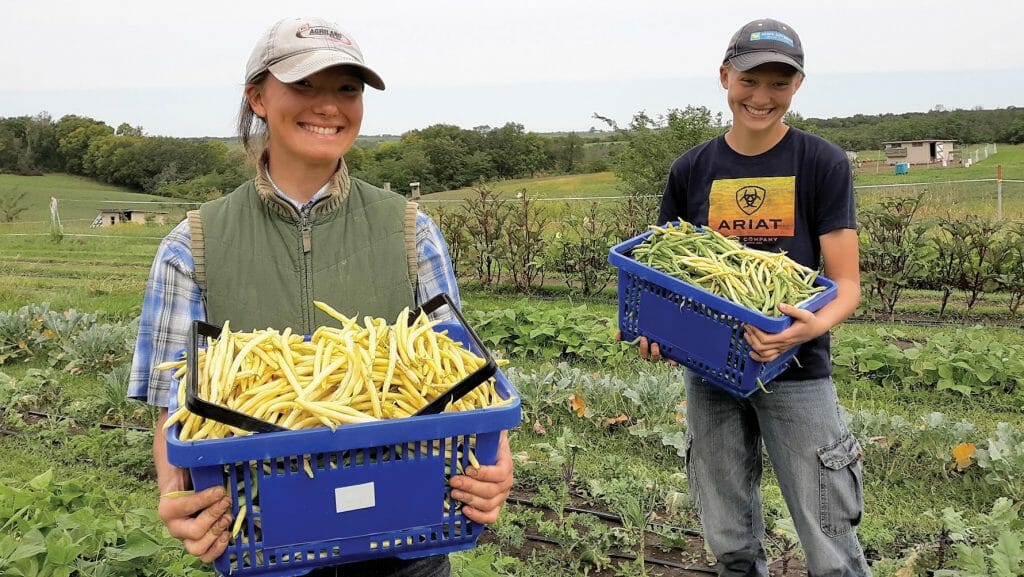
Sisters Danielle (left) and Rebekah Heartsill help harvest beans at Blue Gate Farm, run by Jill Beebout and Sean Skeehan near Chariton.
The USDA Census of Agriculture collects and reports vegetable production data, but once the data are aggregated, reported yields are primarily driven by larger, more mechanized and specialized vegetable farms, with no information about production methods or varieties. Some university extension programs have collated “small-farm vegetable yields,” but again, lack information on varieties and production methods.
Primarily, diversified vegetable farmers rely on conversations with their seed salespeople and fellow farmers to learn the nuances of varietal qualities that are important for direct marketing, such as taste, color, shape, uniformity and yield (in counts and weights).
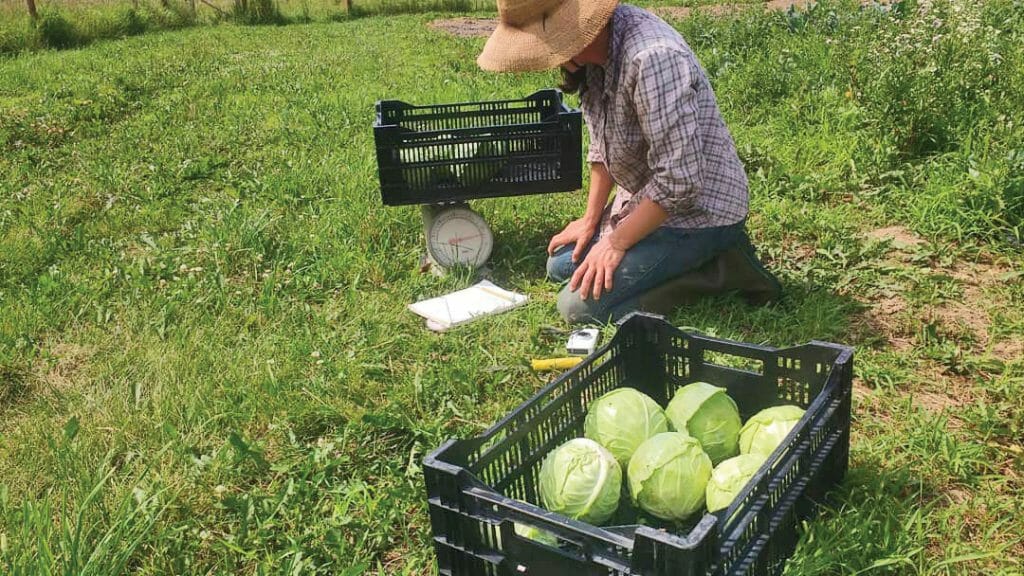
Emily Fagan weighs cabbages on her farm near Decorah, which she’ll enter into the vegetable data site. The search function on the vegetable data site.
Farmer to Farmer Data: an open-access PFI website for sharing vegetable yield and production data
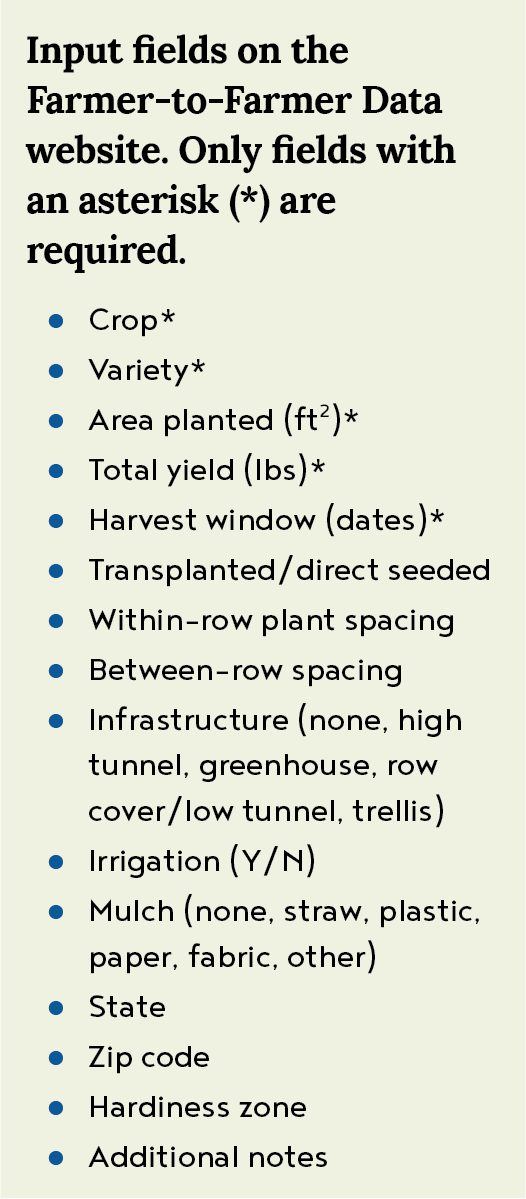 Vegetable farmers in PFI wanted a way to more efficiently share production and yield information. To meet this request, PFI launched the Farmer to Farmer Vegetable Yield and Production Data website; “Farmer-to-Farmer Data”, for short.
Vegetable farmers in PFI wanted a way to more efficiently share production and yield information. To meet this request, PFI launched the Farmer to Farmer Vegetable Yield and Production Data website; “Farmer-to-Farmer Data”, for short.
At this site, farmers and members of the public have open access to view, filter and download farmer- and researcher-submitted production and yield data. Farmers, researchers and other growers who choose to contribute data create a profile, and then can enter production and yield information as many crops as they wish.
This is the only open-access yield-data tool of its kind. To jump-start the website, PFI has also entered over 500 crop production and yield records from Cooperators’ Program research trials on crops including: asparagus, beans, broccoli, cabbage, carrot, cauliflower, sweet corn, cucumber, eggplant, garlic, Chinese cabbage, kale, kohlrabi, leek, lettuce, melon, okra, onion, peas, peppers, potato, pumpkin, radish, shallot, squash, strawberry, sweet potato, Swiss chard, tomato, turnip and watermelon.
PFI is built on farmer-led knowledge creation and knowledge sharing. Our hope is that farmers, researchers and seed companies will all find value in contributing to and accessing yield data through this website. We believe farmers can benefit from the experience of other farmers to more confidently draft cropping and business plans.
For researchers, we believe a publicly accessible dataset of on-farm yield data will improve research outcomes for many types of university studies, from horticulture and agronomy to food systems and future-visioning mapping projects.
Please support this effort and your fellow farmers: log-on and enter your data!

